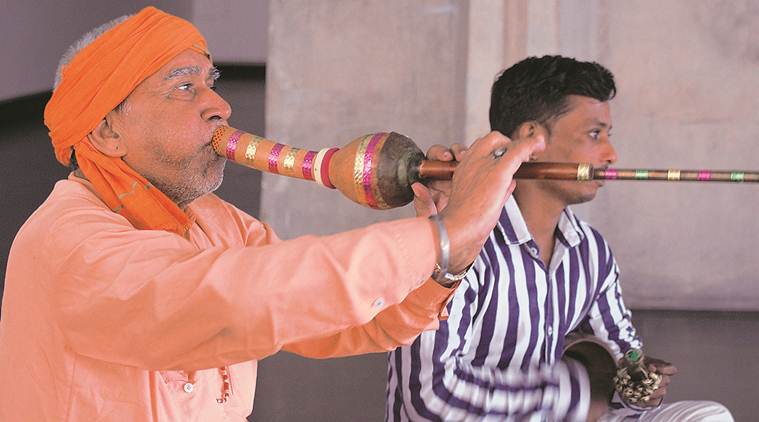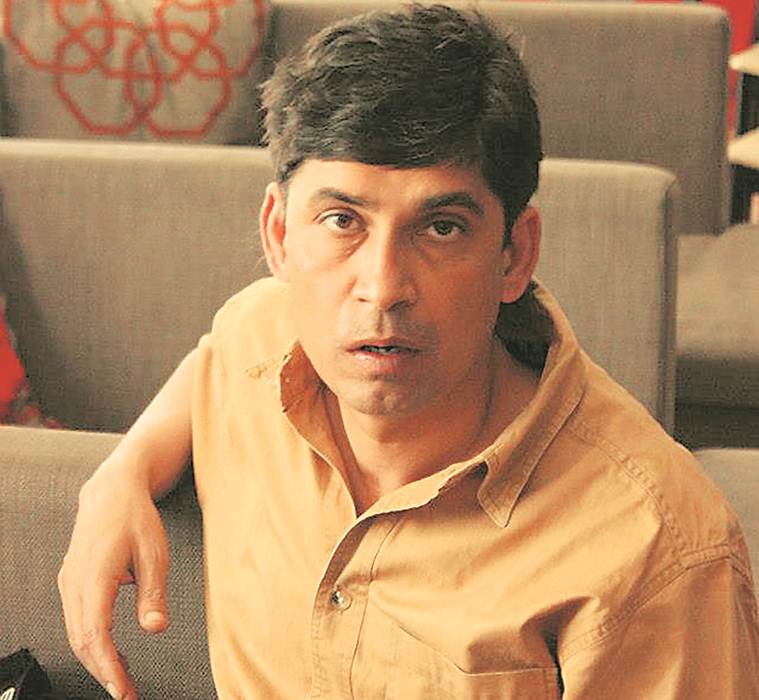
A court room proceeding is on where river Yamuna testifies against Pollution. So does Ganga. The case is helmed by a judge, an actor who is a street magician in real life. A lawyer asks Yamuna what she does for a living. Puppeteer Dipali Bhatt from Kathputli Colony, who plays the part, in a south Delhi girl’s accent says she flows, and her relationship with Pollution has been much like that of Raj Kapoor and Nargis, Laila-Majnu and Deepika Padukone and “Ranbir… sorry, Ranveer Singh”. Next, Taj Mahal makes an entry and accuses Pollution of raiding the white walls of the epitome of love.
This is how theatre director M Sayeed Alam lends a contemporary twist to his play Pollution Hazir Ho. Reviving it nearly 15 years later, he introduces street performers in all the roles, ranging from saperas and bahurupiyas to street magicians and puppeteers.

Alam collaborated with Centre for New Perspectives, an NGO and think tank that works in the field of traditional knowledge skills and marginalised folk performances. He says Pollution Hazir Ho is a departure from his previous plays, be it Ghalib in New Delhi, Maulana Azad or Sons of Babur, as he has brought together 14 street performers, on the stage, for the first time. He has previously worked with Tom Alter and Rakesh Bedi. The 50-year-old playwright says the idea is to train them in a skill they are close to, but are not familiar with.
“Theatre actors can perform on stage but the problem of these performers is that they can only perform in the street and their biggest hurdle is the dialogue, which is our biggest advantage. We go by a script, while they are more spontaneous. I am looking at how we can learn from each other. Their make-up is original, they prepare the gum and colours themselves. They take hours to get ready, while theatre actors take merely half an hour. They believe in improvisation, for instance, whereas we believe in preparing for our play beforehand. The situations we have here are unreal for them,” says Alam. However, he adds, “Even as the bahurupiyas play public prosecutors or suspected criminals, they do not have much reference points, except for Hindi cinema.”
Hailing from Rajasthan, Kapil Kumar — in the role of Pollution — takes pride in how he has essayed Hanuman, Narad Muni, Akbar, and even Sita with as much flair as a bahurupiya when performing in villages of Punjab, Haryana or Uttar Pradesh, and how he plans to present the best version of Pollution, by including garbage, plastic bags, the colour black and depicting smoke in his attire on the final day.
“Our grandfathers used to perform at the Bikaner palace for the rajas. With the entry of entertainment and technology, opportunities for our skills are vanishing. I hope such a play helps to improve our condition, so we can feed and educate our children.”
As the saperas lend the background music, Shishanath Sapera, now in his sixties, reveals how long gone are the days when he would tell folks in villages on how to safeguard themselves against snake bites and inform them about the different types of poisonous snakes during his performances. The government’s ban on snake charmers has threatened the survival of this art, he says.
The play will be staged at The Stein Auditorium, India Habitat Centre, Delhi, on July 13, 7 pm. Tickets are available on Bookmyshow